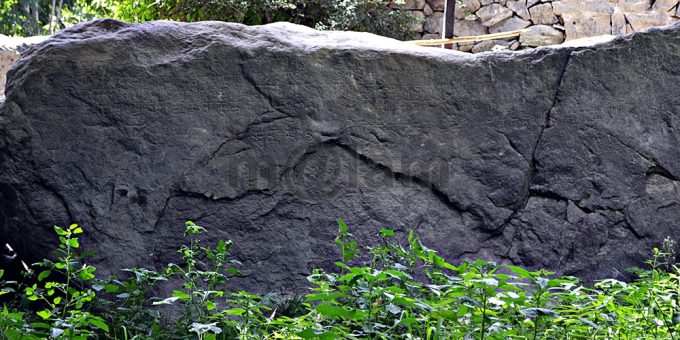The Danyore Rock Inscriptions is a gigantic boulder bearing inscriptions from the 7th and 8th centuries A.D. The inscription is the most important discovery of Danyore and was seen for the first time by Karl Jettmar in 1958. The inscribed rock is situated in the premises of a private house in Danyore, across Gilgit city in Gilgit-Baltistan, Pakistan and is locally known as “Likhitu Giri”. The archaeological site is not very much popular and known only to a limited count of individuals/organizations related to archaeology and tourism.
The town of Danyore is located on the main Karakoram Highway towards Hunza, south of Gilgit and separated only by Gilgit River and Hunza River from two sides. Danyore is accessible by car in 10 minutes from Gilgit yet finding the exact location of the Danyore Rock Inscription can be a challenge as the signboard showing the direction to the exact location has been disappeared and the rock is located off the main Karakoram Highway leading through a narrow street to a private house in the settlement. The family living in the house didn’t know much about the worth of the rock.
Measuring 13 x 7 feet, the gigantic rock bears the names of the Tibetan kings who ruled in Gilgit during the 7th and 8th centuries in a five-line Sanskrit inscription in the late Brahmi character. The inscriptions, as per the renowned Pakistani archaeologist Dr Ahmed Hasan Dani, were engraved by the prince Kumaramatya and belonged to the line of rulers mentioned in the Hatun inscription in the Ghizer Valley. It confers royal titles of Patola Shahi Shahanushahi and Parama-Bhattaraka to the ruler Jayamangala Vikramaditya Nandi of the Vikramaditya family.
According to Dr Dani, the purpose of this inscription appears to commemorate some conquest of a local ruler, probably the overthrow of a raid by Tibetans in the upper Indus valley. Moreover, the Kingdom of Great and Little Bolor merged under Tibetan suzerainty in 725. The rock, however, has deteriorated with the passage of time and the inscription faded badly. It shows that Sanskrit was once a part of this land and bears significant evidence of the past that needs to be preserved.




Comment (0)